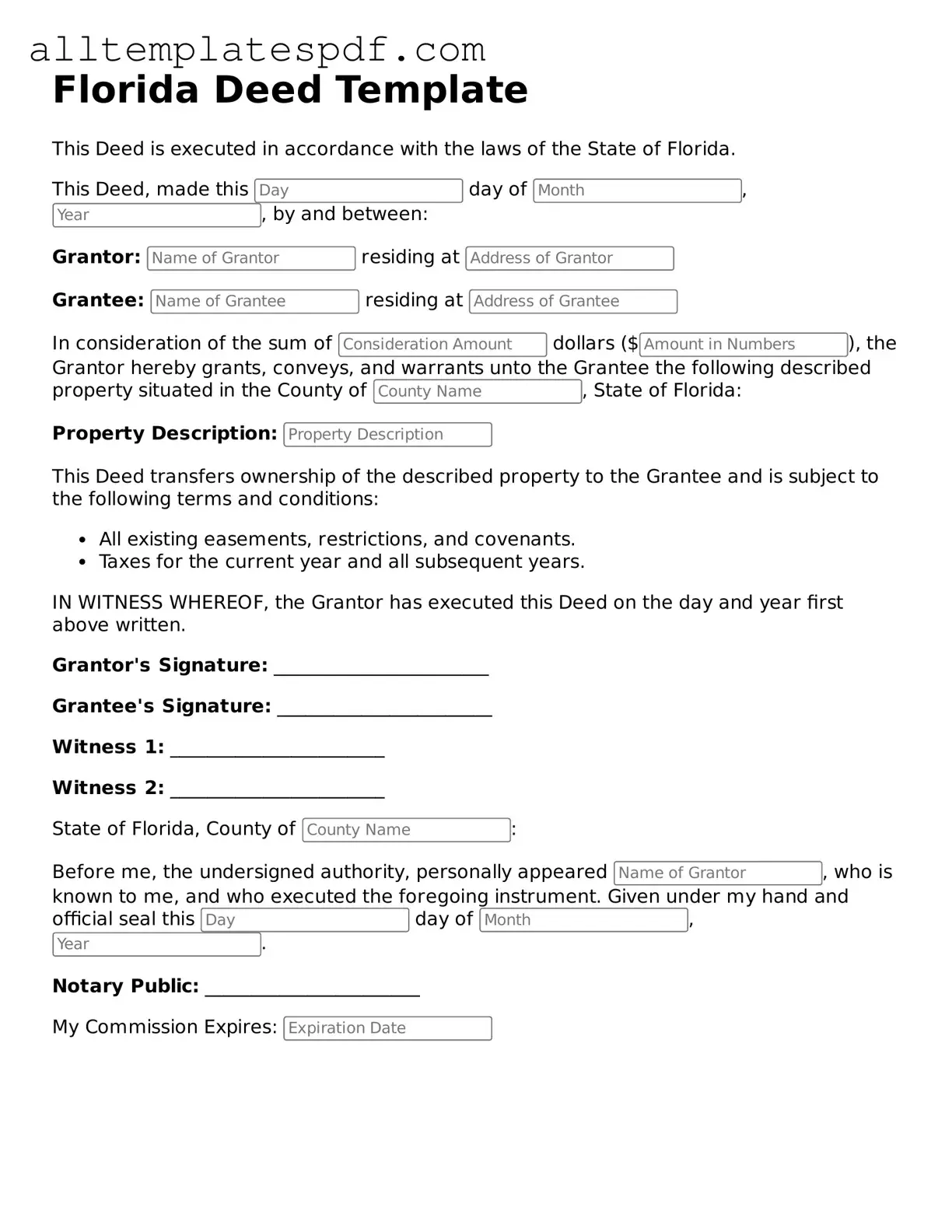Filling out a Florida Deed form can be straightforward, but many people make mistakes that can lead to complications. One common error is not including the correct legal description of the property. This description is crucial because it identifies the exact location and boundaries of the property. Without it, the deed may be invalid.
Another frequent mistake involves the names of the parties involved. It is essential to ensure that the names of the grantor (the person transferring the property) and the grantee (the person receiving the property) are spelled correctly and match their legal identification. Any discrepancies can lead to confusion or disputes later.
Many people forget to include the date of the transaction. While it may seem minor, the date is important for establishing the timeline of ownership. It can affect the rights of the parties involved and may have implications for tax purposes.
Omitting the signature of the grantor is another mistake that can render the deed invalid. The grantor must sign the deed in the presence of a notary public. This step is crucial for verifying the identity of the grantor and ensuring that the transfer is legitimate.
Some individuals fail to have the deed notarized. In Florida, notarization is required for the deed to be legally recognized. Without this step, the deed may not be accepted by the county clerk's office when recording it.
Another common error is not providing the proper consideration for the property. The deed should state the amount paid for the property, even if it is a nominal sum. This information is necessary for tax assessments and can affect future transactions.
People often overlook the need to record the deed with the county clerk's office. Recording the deed is important because it provides public notice of the ownership transfer. Failure to record can lead to disputes over property rights.
Incorrectly identifying the type of deed can also be problematic. Different types of deeds, such as warranty deeds and quitclaim deeds, have different legal implications. Understanding which type to use is essential for protecting one’s interests.
Additionally, some individuals neglect to check for existing liens or encumbrances on the property before transferring it. This oversight can lead to financial liabilities for the grantee, who may inherit debts tied to the property.
Lastly, failing to consult with a legal professional can be a significant mistake. While it may seem like a simple task, the nuances of property law can be complex. Seeking guidance can help avoid costly errors and ensure that the deed is filled out correctly.
